Do not fill out this information.
On this particular page, the Initial Text and Image fields for this template are not used (inactive). A Carousel Slideshow is displayed instead.
To edit the Carousel Slideshow, Choose Edit Existing > Carousel Slides. Then navigate to your CZO's entry entitled "Research"
The Southern Sierra Critical Zone Observatory is a platform for research on critical zone processes, with ongoing investigations and measurements at several sites on the western slope of the southern Sierra Nevada.
Spatial differences along the elevation gradient characterizing our Critical Zone Observatory's field areas - from forest ecology to preciptation phase to bedrock composition - create a natural laboratory to study changes in critical zone characteristics and processes across the landscape. While this elevation transect experiences rapid seasonal changes, from snow cover to wet soil to dry soil in a 1-2 month period, climate warming will shift this transition to an earlier time and a higher elevation. Researchers can also use the gradient then as a substitution of space for time to research how critical zone processes respond to natural and anthropogenic environmental changes, including warmer average temperatures and forest thinning.
Our growing community of critical zone scientists from multiple institutions and areas of research expertise are carrying out investigations in the Sierra National Forest, Kings River Experimental Watershed, San Joaquin Experimental Range, and Sequoia National Park.
Learn more about our field areas and instrumentation -->
Conduct research at our CZO -->
Our integrated research is centered on several interdisciplinary questions and goals:
Critical Zone researchers are currently investigating a tightly linked set of research questions at our Observatory, including:
- How do soil moisture and topographic variability interact to influence soil-formation and weathering?
- How is the response of soil moisture to snowmelt and rainfall controlled by variability across the landscape, and how do these responses both reflect and constrain streamflow and ET?
- How does vegetation, and ecosystem distribution and function (species, plant functional type, production), vary with climate (elevation); and what physiological mechanisms regulate these interactions?
- How does vegetation influence land-atmosphere exchange of water, energy, and CO2?
- How do soil/landscape heterogeneity and water fluxes influence nutrient cycling and retention?
- What is the role of aeolian fluxes in controlling nutrient availability and NPP?
While some research is centered on a single discipline, many questions require a multi-disciplinary approach. Our measurements and monitoring efforts overlap with other observatories in the National Science Foundation's U.S. Critical Zone Observatory Network in order to rapidly improve Earth systems models.
Explore examples of current research topics in detail -->
Initial research focus and findings
Since it was initiated in 2007, the Southern Sierra CZO has become a platform for a wide variety of research. Much of the research during the first five years addressed these questions:
- How does landscape variability control how soil moisture, evapotranspiration and stream flow respond to snowmelt and rainfall?
- How is soil moisture linked to topographic variability, soil formation and weathering?
- What physiological mechanisms are controlling how vegetation distribution and function vary with climate
- How do vegetation attributes influence cycling of water, energy, and CO2?
- What is the link between soil heterogeneity, water fluxes and nutrient availability?
Among the many results to date at our CZO, four key findings stand out:
- A strategically distributed measurement suite provides the data needed to close the water balance at multiple scales, providing a foundation for further process research. At the headwater catchment scale our estimates of evapotranspiration (ET) using a water-balance approach are in good agreement with flux-tower measurements. Similarly, our estimate of the water balance across the entire Upper Kings River basin also matches observations.
- Mid-montane forests have a year-round growing season, avoiding summer water-stress shutdown through deep rooting and avoiding winter shutdown cold tolerance, explaining high productivity and biomass in the mid-montane belt.
- In contrast to high rates of evapotranspiration (ET) at mid-elevation, we observed reduced ET and productivity at lower elevations owing to summer moisture stress and at high elevations due to cold stress. This confirms the inverse drought and energy limitation conceptual model, with implications for effects of warming on ET.
- Deep rooting and soil development are important for sustaining high rates of net primary productivity (NPP). At our main instrumented headwater catchment, we found that over one-third of the ET came from depths below 1 m.
For more information on our activities and findings, view our annual reports and publications.
© SSCZO
© SSCZO
© SSCZO
© University of California, Merced
© Sierra Nevada Research Institute
Through late September, the stream at the Providence subcatchment 301 was muddy but had no running water, even after a few small storms. Now, enough rain and snow has fallen to start flow again. © SSCZO
The forest around Soaproot Saddle is showing extreme water stress. At the end of the water year, the eddy covariance flux tower was only showing respiration and decay, no water usage! © SSCZO
This view from a helicopter above Soaproot Saddle shows the patchy nature of the tree death. As more trees are impacted by insects, these patches are growing. © M Meadows
Observatory research is framed by multiple spatial and temporal scales.
Major questions and goals of current research at the Southern Sierra Critical Zone Observatory
Research News

FEATURED
More news about SSCZO on Center for Ecosystem Climate Solutions
24 Nov 2020 - More news about SSCZO on Center for Ecosystem Climate Solutions, which grew out of the SSCZO, also on Sustainable California
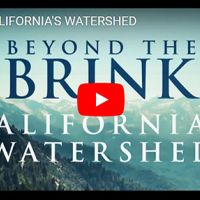
FEATURED
27-minute film California’s Watershed is being shown on PBS nationwide
24 Nov 2020 - This film, plus our 90-minute documentary Beyond the Brink, are also available at https://www.beyondthebrink.global/
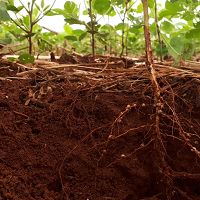
FEATURED NATIONALLY
NSF Blog: No soils, no life
27 Oct 2020 - They’re beneath our feet, but we seldom hear important signals in the soils

FEATURED NATIONALLY
2020 CZO Webinar Series on Sustainability
17 Jun 2020 - For an updated listing of these talks, including abstracts, see /national/education-outreach/sustainability-2020/ The U.S....
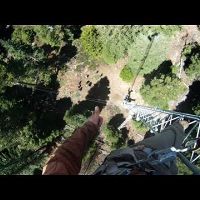
FEATURED
Southern Sierra CZO Videos
04 May 2020 - Onward California - University of California television spots showcase Southern Sierra CZO research

FEATURED
CZOs at AGU 2019
19 Nov 2019 - A list of CZ-related sessions, abstracts and events at the 2019 AGU Fall Meeting.

FEATURED
CZ colleagues: Please contact us about proposals for NSF’s CZ Collaborative Network, due 02 Dec 2019
08 Jul 2019 - CZO will end Nov 2020, succeeded by the “CZ Collaborative Network”. Let’s explore how the CZ community can build upon the CZOs via new NSF proposals.
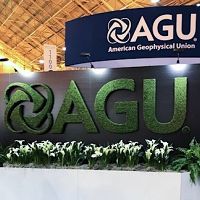
FEATURED
CZOs at AGU 2018
19 Nov 2018 - The 2018 AGU Fall Meeting will be held December 10-14 in Washington, D.C.
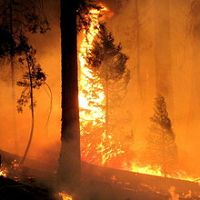
FEATURED
NSF News Release: Billions of gallons of water saved by thinning forests
11 May 2018 - Too many trees in Sierra Nevada forests stress water supplies, scientists say
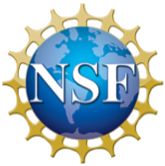
FEATURED
NSF Discovery articles focus on the CZOs.
10 May 2018 - The Discoveries section of the National Science Foundation's website on Critical Zone Observatories (CZOs).

FEATURED
NSF Discovery: On World Water Day, scientists study spawning salmon through a riverbed lens
22 Mar 2018 - NSF Southern Sierra CZO researchers peer into North America’s West Coast salmon rivers

FEATURED
UCTV: Southern Sierra CZO researchers featured on Sustainable California channel
21 Jun 2017 - University of California Television (UCTV) features Bales, Conklin, Glaser, Safeeq, and others on the new Sustainable California channel

FEATURED
NY Times: Sierra Nevada Snow Won’t End California’s Thirst
11 Apr 2016 - New York Times reporter, Henry Fountain spoke with Southern Sierra CZO PIs Roger Bales and Martha Conklin and investigtor Mohammad Safeeq as they...

FEATURED
Critical Zone Profiles - Meet the people doing CZO science (Southern Sierra CZO)
07 Sep 2015 - Get a sense of the people and the work. Several members of the Southern Sierra CZO are profiled here, including students and professors.
_200_200_80auto_s_c1.jpg)
Researcher Spotlight: Morgan Barnes
14 Nov 2018 - Say 'Hello!' to biogeochemist Morgan Barnes! Morgan specializes in the study of soil nutrient biogeochemistry, focusing on phosphorus in the Sierras
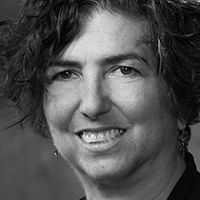
Congratulations Jill Marshall on receiving the 2018 Luna B. Leopold Young Scientist Award
06 Nov 2018 - Marshall Receives 2018 Luna B. Leopold Young Scientist Award
_200_200_80auto_s_c1.jpg)
Researcher Spotlight: Jeff Lauder
24 Oct 2018 - Meet forest ecologist Jeff Lauder! Lauder's research focuses on Sierra Nevada Conifers and how they have been responding to stress during drought!
Multiple postdoc and grad student opportunities at UC Merced
12 Sep 2018 - Two postdoctoral scholar positions and multiple MS or PhD research assistantships are currently available at the University of California, Merced....
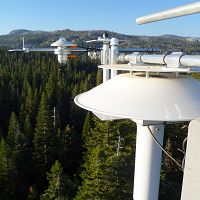
Research Program Update: September 2018
07 Sep 2018 - Recent activities and findings, funding opportunities, upcoming events, and other updates
Example Publications
FEATURED NATIONALLY
Resolving Deep Critical Zone Architecture in Complex Volcanic Terrain. Moravec B.G., White A.M., Root R.A, Sanchez A., Olshansky Y., Paras B.K., Carr B., McIntosh J., Pelletier J.D., Rasmussen C., Holbrook W.S., Chorover J. (2020): Journal of Geophysical Research: Earth Surface 125(1): e2019JF005189 Cross-CZO
FEATURED
Ecological and genomic attributes of novel bacterial taxa that thrive in subsurface soil horizons. Brewer, Tess E., Emma L. Aronson, Keshav Arogyaswamy, Sharon A. Billings, Jon K. Botthoff, Ashley N. Campbell, Nicholas C. Dove, Dawson Fairbanks, Rachel E. Gallery, Stephen C. Hart, Jason Kaye, Gary King, Geoffrey Logan, Kathleen A. Lohse, Mia R. Maltz, Emilio Mayorga, Caitlin O’Neill, Sarah M. Owens, Aaron Packman, Jennifer Pett-Ridge, Alain F. Plante, Daniel D. Richter, Whendee L. Silver, Wendy H. Yang, Noah Fierer (2019): mBio Oct 2019, 10 (5) e01318-19 Cross-CZO National
FEATURED
Southern Sierra Critical Zone Observatory and Kings River Experimental Watersheds: A Synthesis of Measurements, New Insights, and Future Directions. O'Geen, A.; Safeeq, M.; Wagenbrenner, J.; Stacy, E.; Hartsough, P.; Devine, S.; Tian, Z.; Ferrell, R.; Hopmans, J.W.; and Bales, R. (2018): Vadose Zone Journal, 17:180081
FEATURED
Mercury sourcing and sequestration in weathering profiles at six Critical Zone Observatories. Richardson, Justin B., Arnulfo A. Aguirre, Heather L. Buss, A. Toby O'Geen, Xin Gu, Daniella M. Rempe, and Daniel deB. Richter (2018): Global Biogeochemical Cycles, 32(10):1542-1555 Cross-CZO National
FEATURED
Ideas and perspectives: Strengthening the biogeosciences in environmental research networks. Richter, D.D., S.A. Billings, P.M. Groffman, E.F. Kelly, K.A. Lohse, W.H. McDowell, T.S. White, S. Anderson, D.D. Baldocchi, S. Banwart, S. Brantley, J.J. Braun, Z.S. Brecheisen, C.W. Cook, H.E. Hartnett, S.E. Hobbie, J. Gaillardet, E. Jobbagy, H.F. Jungkunst, C.E. Kazanski, J. Krishnaswamy, D. Markewitz, K. O’Neill, C.S. Riebe, P. Schroeder, C. Siebe, W.L. Silver, A. Thompson, A. Verhoef, G. Zhang (2018): Biogeosciences 15: 4815-4832 Cross-CZO National
FEATURED
Prevalence and magnitude of groundwater use by vegetation: a global stable isotope meta-analysis. Jaivime Evaristo and Jeffrey J. McDonnell (2017): Scientific Reports 7 Cross-CZO National
FEATURED
Special issue of The Earth Scientist about the Critical Zone and the US NSF Critical Zone Observatory (CZO) program. CZO Education/Outreach team (2016): The Earth Scientist, Volume XXXII, Issue 3, Fall 2016 Cross-CZO National
Watersheds dynamics following wildfires: Nonlinear feedbacks and implications on hydrologic responses. Maina, F.Z.; Siirila‐Woodburn, E.R. (2019): Hydrological Processes, 34 (1)
Plant Accessible Water Storage Capacity and Tree-Scale Root Interactions Determine How Forest Density Reductions Alter Forest Water Use and Productivity. TAGUE, C.L., & M.A. MORITZ (2019): Frontiers in Forests and Global Change
California forest die-off linked to multi-year deep soil drying in 2012–2015 drought. GOULDEN, M.L. & R.C. BALES (2019): Nature Geoscience, 12
The changing water cycle: The eco-hydrologic impacts of forest density reduction in Mediterranean (seasonally dry) regions. TAGUE, C.L., MORITZ, M., HANAN, E (2019): WIREs Water
Fight or Flight? Tradeoffs Between Drought Defense and Reproduction in Conifers. LAUDER, J.D. E. V. MORAN, S. J. HART (2019): Tree Physiology
Water residence time (age) and flow path exert synchronous effects on annual characteristics of dissolved organic carbon in terrestrial runoff. JEPSEN, S.M., T.C. HARMON, S. SADRO, B. REID, S. CHANDRA (2019): Science of the Total Environment
Toward Better Understanding of Terrestrial Processes through Long-Term Hydrological Observatories (Introduction to Special Section: Hydrological Observatories). BOGENA, H.R., T. WHITE, O. BOUR, K.H. JENSEN (2019): Vadose Zone Journal, 17, 1
Explore Further



_350_270_80auto.jpg)

